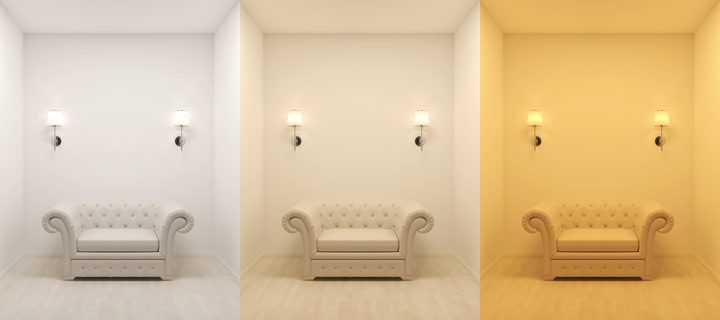Kelvin colours.. Explained

Kelvin Colours - What colour should i use?
When it comes to lighting your home or office, one of the most important factors to consider is the colour temperature of your light bulbs. The colour temperature of a light bulb is measured in Kelvin (K) and can range from warm, yellowish tones to cool bluish tones. In this article, we will explore the various Kelvin colours for light bulbs, ranging from 2700K to 6500K, and explain their differences and uses.
2700K - 3000K: Warm White
Light bulbs with a colour temperature of 2700K to 3000K are often referred to as "warm white" or "soft white." These bulbs emit a warm, yellowish glow, similar to the light produced by traditional incandescent bulbs. Warm white light is often used in living areas, such as bedrooms and living rooms, as it creates a cozy and relaxing atmosphere.
3500K - 4000K: Cool White
Light bulbs with a colour temperature of 3500K to 4000K are often referred to as "neutral white" or "bright white." These bulbs emit a slightly cooler, white light, which is similar to natural daylight. Neutral white light is often used in areas where tasks are performed, such as kitchens, bathrooms, and workspaces, as it provides a bright and clear light that helps improve focus and productivity.
5000K - 6500K: Daylight
Light bulbs with a colour temperature of 5000K to 6500K are often referred to as "cool white" or "daylight." These bulbs emit a bright, bluish-white light, similar to the light produced by natural daylight. Daylight light is often used in areas where precise color rendering is important, such as art studios or jewelry stores. It can also be used in areas where a bright, energizing light is desired, such as garages or basements.
It's important to note that the colour temperature of a light bulb can affect the way we perceive colours in our environment. Warm white light can make warm colors, such as reds and oranges, appear more vibrant, while cool white light can make cool colors, such as blues and greens, appear more vivid. This is important to consider when choosing the colour temperature of your light bulbs, as it can affect the overall ambiance and feel of your space.
In conclusion, the colour temperature of your light bulbs can have a significant impact on the ambiance and functionality of your space. By understanding the differences between Kelvin colors for light bulbs, you can make an informed decision when choosing the best bulbs for your needs. Whether you need warm, cozy light for your living room or bright, energizing light for your workspace, there's a Kelvin color temperature that's right for you.








